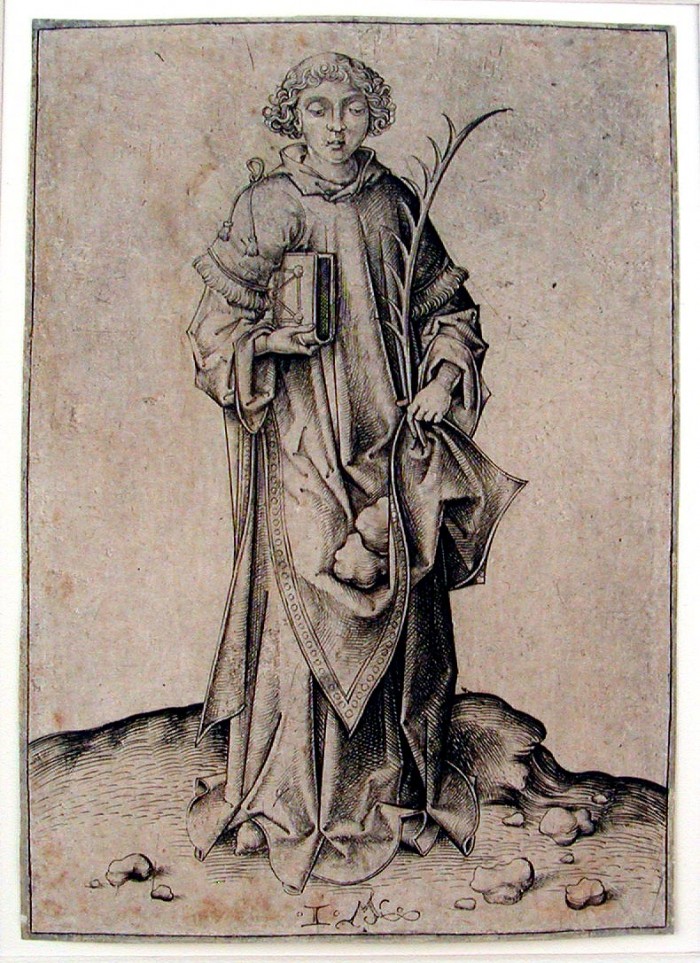St. Stephen

Israhel van Meckenem (1445-1503), St. Stephen, engraving, circa 1480-1490. Reference: Lehrs IX 382, Bartsch 93. First state of two. [with initials below in the plate] On old laid paper with a Hand and Flower watermark (Lehrs watermark 10), edges made up a few mm. within borderline, skinned and reinforced in places on verso from removal of old backing, with a few associated repaired breaks, most noticeably on right arm of the saint, and another into top of palm frond in his left hand, some stains.
A fine impression of this great rarity (we know of no other impressions in North America). In a brown/black ink, unusually strong in the printing of the lower part of the vestments and on the ground.
Provenance: ex coll S. Paelinck (sepia ink inscription on verso, “V Pael, No 103”, see Lugt 257)
Ducs d”Arenberg (Lugt 567)
Dr. Albert M. Blum (stamp on mat), his sale Sothebys New York, 2/88
This impression is cited by Lehrs in his register of sales (auction Paelinck, Brussels, 1860 first state, 60 francs to the Duke of Arenberg) and classified as a * impression (no *** impressions are cited). Lehrs knew of 40 impressions only.
Israhel van Meckenem, trained as a goldsmith, was one of the earliest, and most prolific Renaissance printmakers. He is notorious for copying the work and reworking the plates of other engravers (including Master ES) and well-known also for creating the first double portrait – of himself and his wife.the printing process. His original engravings show scenes from everyday life, recording contemporary dress and manners with honesty and humour; but of course he also made religious prints, and in fact made prints of anything that would sell; he was well-attuned to the market.
St. Stephen was the first Christian martyr – according to the Acts of the Apostles he was taken outside of the city and stoned to death. Generally depicted as a young and beardless man, with the stones, he’s invoked by headache sufferers; the association is with the pain of the stoning.